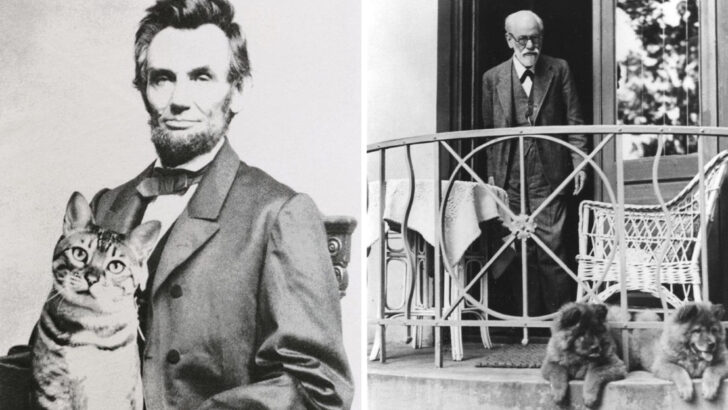History remembers the battles, the speeches, and the grand moments. But behind every great historical figure, there was often a loyal, four-legged companion—sometimes brave, sometimes bizarre, and sometimes just as dramatic as their famous owner.
Napoleon’s dog, for example, didn’t just sit idly by while his master shaped empires. This little canine had a flair for theatrics, proving that even the most powerful leaders weren’t immune to the antics of a dramatic pet. And he wasn’t the only one.
From presidents to poets, royals to revolutionaries, some of history’s most famous figures had pets with personalities big enough to deserve their own place in the history books. Some were symbols of power, others were sources of comfort, and a few were downright troublemakers.
Let’s meet the pets that stood beside history’s greats—stealing hearts, causing chaos, and sometimes even making their mark on history.
Napoleon’s Dog
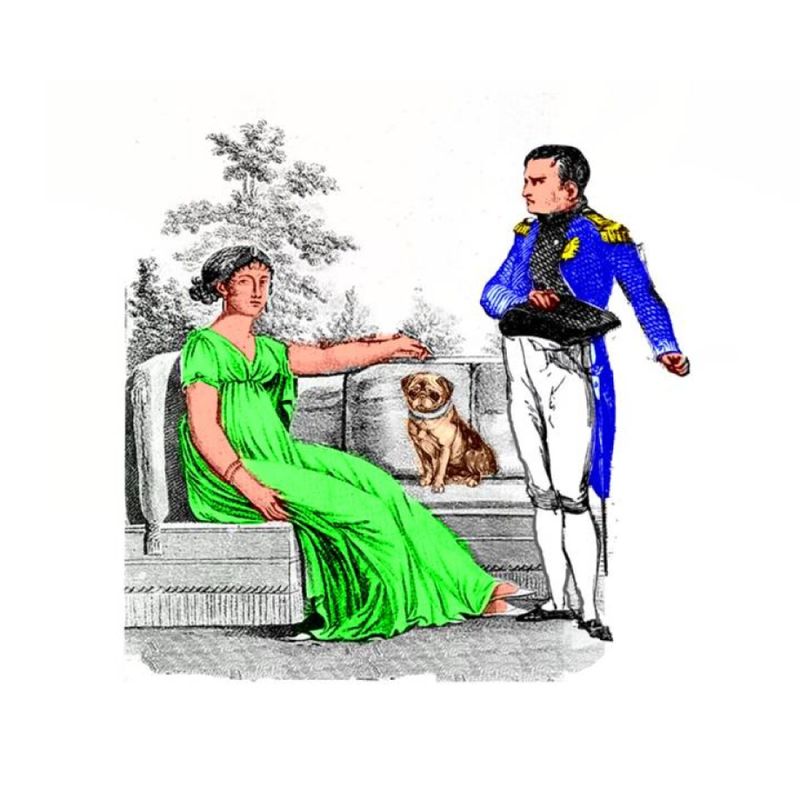
Napoleon’s dog, a lively poodle named Fortune, was every bit the drama queen his master was. Known for his theatrical antics, Fortune wasn’t just content with being Napoleon’s companion; he commanded attention!
In the grand halls of France, he’d prance around, showing off his curly coat and demanding pats from everyone in sight. Fortune had a flair for the dramatic, often making a scene if he wasn’t the center of attention.
His loud barks were as infamous as Napoleon’s military strategies, making him a memorable figure in the emperor’s life.
Churchill’s Parrot
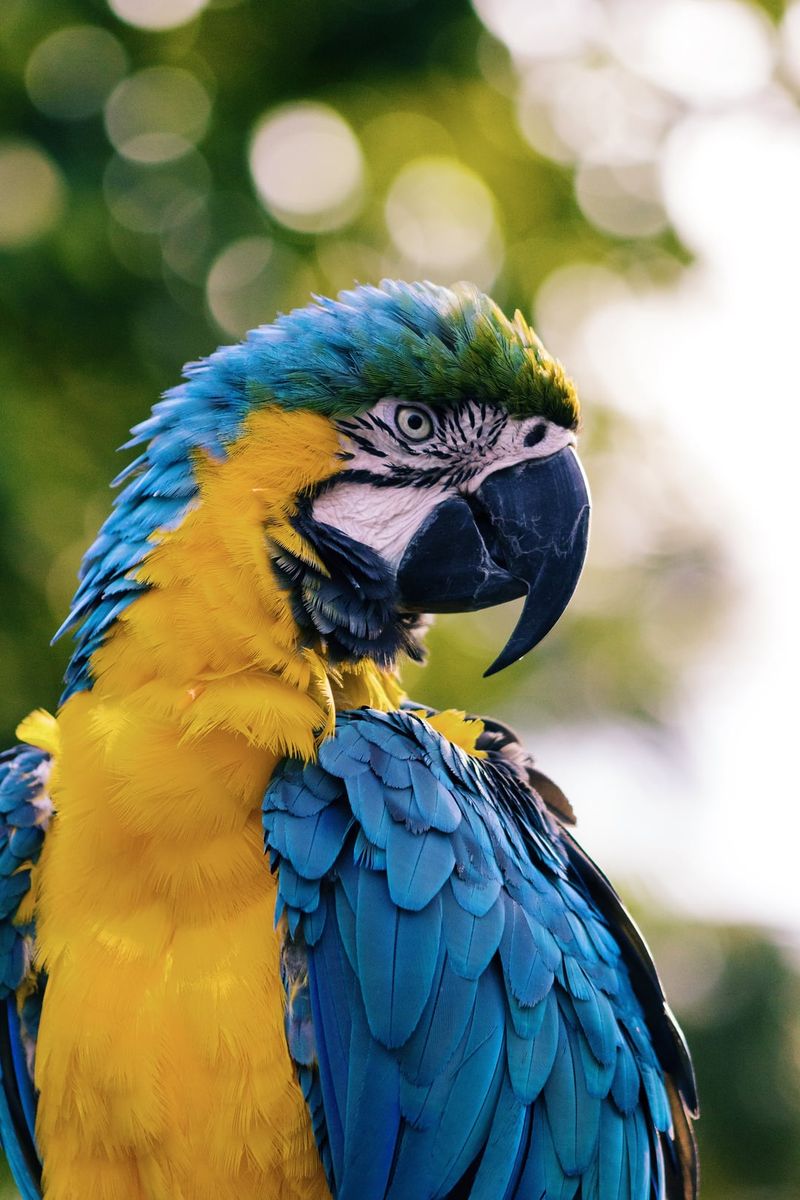
Winston Churchill’s parrot, a charismatic bird named Charlie, was known for his knack for mimicry and his penchant for colorful language. This feathered friend shared the Prime Minister’s love for conversation, often engaging in lively “debates” with anyone who’d listen.
With his bright plumage and sharp wit, Charlie was more than a pet; he was a vocal symbol of British resilience. He’d chatter away, echoing Churchill’s speeches, and became a living reminder of the man’s tenacity.
Charlie’s presence added a layer of character to Churchill’s already vibrant household.
Alexander’s Horse
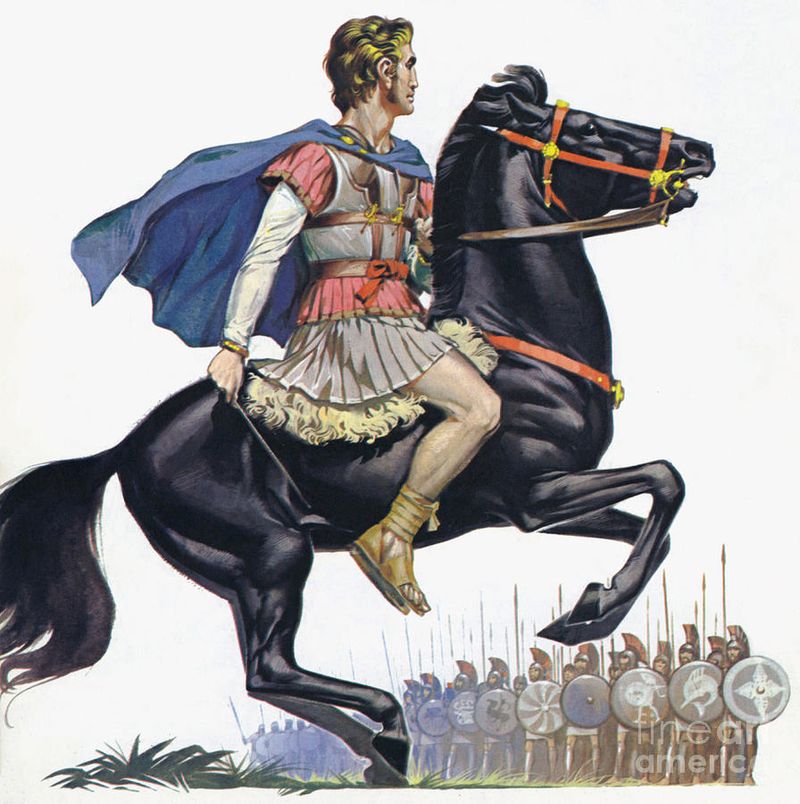
Alexander the Great’s horse, Bucephalus, was no ordinary steed; he was a symbol of power and loyalty. Known for his bravery and strength, he carried Alexander through countless battles, never flinching in the face of danger.
Bucephalus was more than a mount; he was Alexander’s trusted companion, sharing in the triumphs and trials of conquest. His presence on the battlefield was as commanding as the king himself, embodying the spirit of courage and determination.
Together, they carved a legacy that echoed through history, showcasing the bond between man and beast.
George Washington’s Donkey, Royal Gift
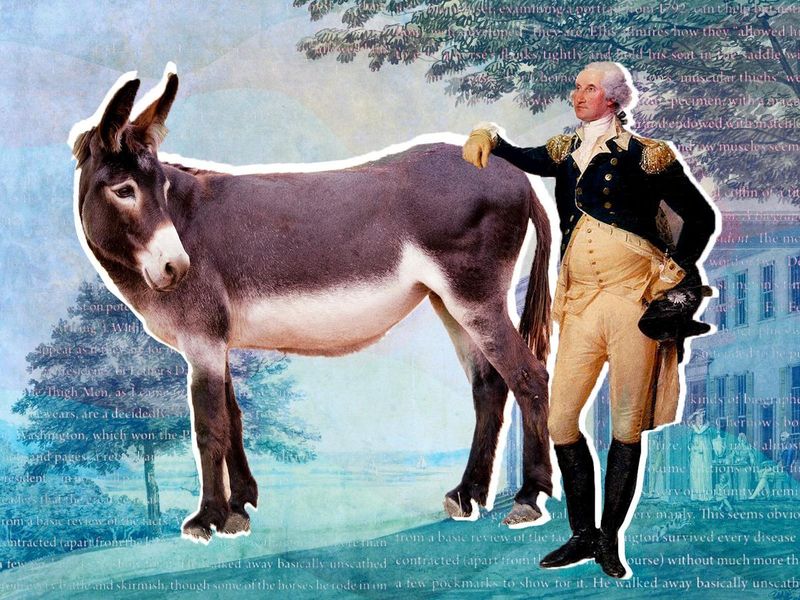
George Washington, the first President of the United States, was gifted a donkey named Royal Gift by the King of Spain. The donkey was not just any animal but a symbol of diplomacy and international relations.
He became an integral part of Washington’s estate at Mount Vernon, contributing to the development of American mules. Royal Gift’s lineage played a vital role in agriculture, demonstrating the practical side of pet ownership among historical figures.
Washington’s attention to his animals reflected his values and foresight, blending politics with the pastoral life he cherished.
Queen Victoria’s Pet Sloth, Slowpoke
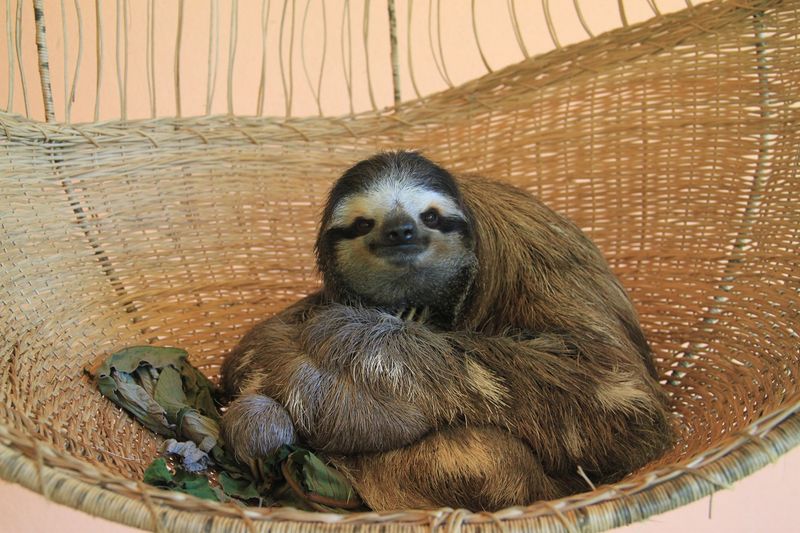
Queen Victoria, adorned in her classic Victorian attire, had an unusual pet named Slowpoke—a sloth. This slow-moving creature was a gift from a visiting dignitary, adding an exotic flair to the royal menagerie.
Slowpoke became a symbol of Victoria’s open-mindedness towards nature and diversity. Guests at Buckingham Palace were often amused by the creature’s relaxed demeanor, blending with the opulent surroundings.
Slowpoke’s care was a testament to the Queen’s nurturing spirit, and although not as fast-paced as her royal duties, this sloth was a cherished companion in her life.
Cleopatra’s Pet Leopard, Spot
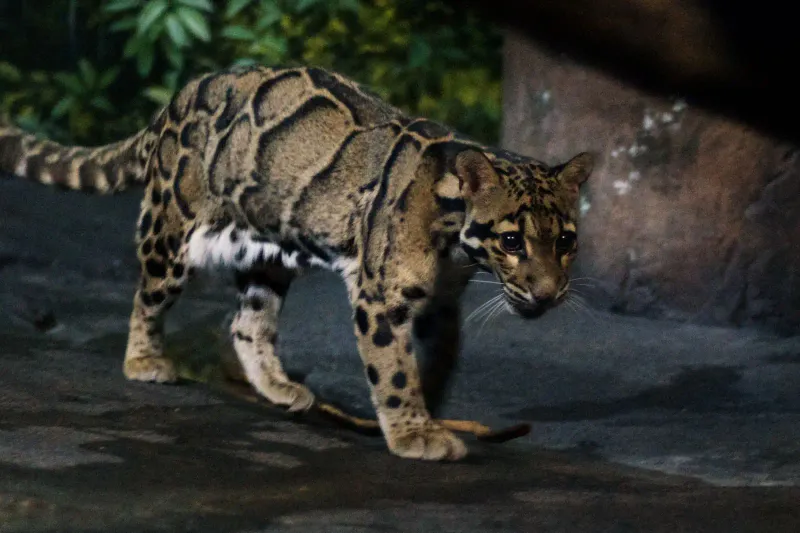
Cleopatra, the iconic Egyptian queen, had a pet leopard named Spot. This exotic pet was more than just a symbol of wealth; it represented Cleopatra’s powerful and enigmatic persona.
Spot was often seen by her side, adding to the allure and mystique that surrounded her rule. The leopard’s presence in Cleopatra’s court was a reflection of her connection to the grandeur of Egypt’s ancient traditions.
Spot roamed the palace grounds freely, embodying the wild spirit that Cleopatra was known for, bridging her world with the untamed beauty of the animal kingdom.
Abraham Lincoln’s Cat, Tabby
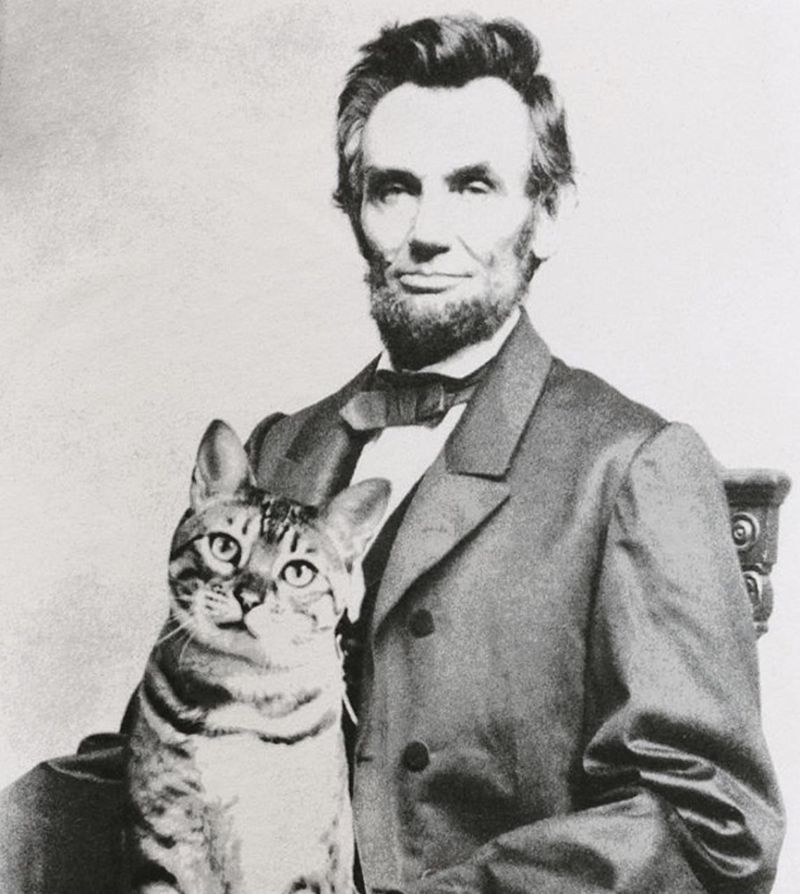
Abraham Lincoln, known for his love of animals, had a cat named Tabby. This feline companion was a source of comfort during the turbulent years of his presidency.
Tabby was known to wander freely through the White House, often finding a cozy spot on Lincoln’s desk. The presence of this cat was a reflection of Lincoln’s gentle nature and deep empathy.
Tabby’s antics, like knocking over papers, offered moments of levity amidst the serious affairs of state, providing Lincoln with a much-needed distraction from the pressures of leadership.
Marie Antoinette’s Angora Cat, Duchess
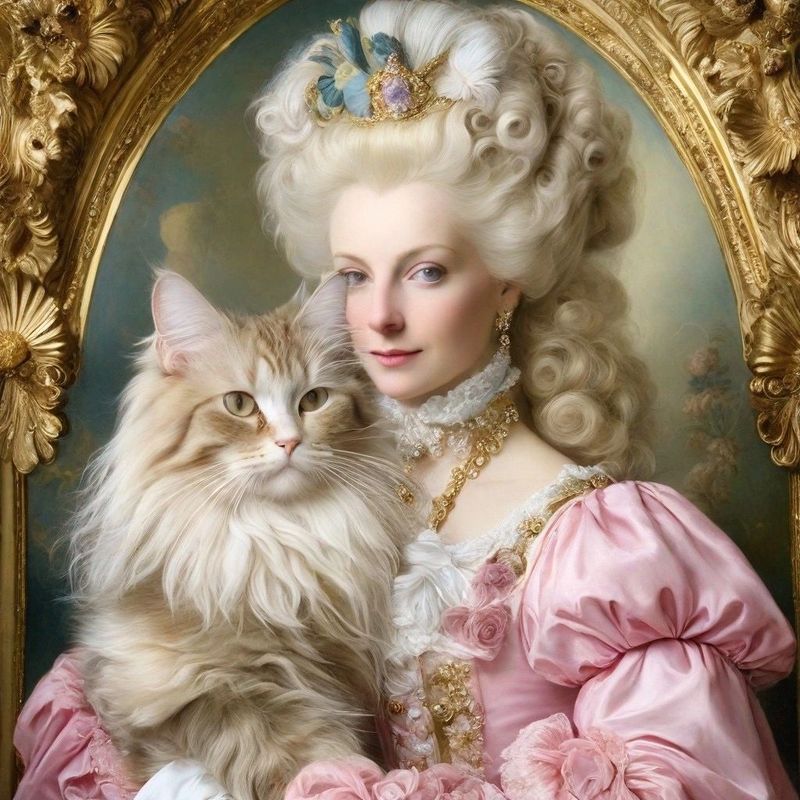
Marie Antoinette, the last Queen of France before the French Revolution, adored her Angora cat named Duchess. This elegant feline was a perfect match for the queen’s luxurious lifestyle at Versailles.
Duchess was pampered with the finest foods and silken cushions, reflecting the opulence associated with Marie Antoinette’s court. The cat’s regal demeanor was a fitting complement to the queen’s sophisticated world.
Despite the tumultuous times, Duchess remained a loyal companion, symbolizing Marie Antoinette’s softer side, away from the political intrigues and public scrutiny she often faced.
Genghis Khan’s Falcon, Thunderclap
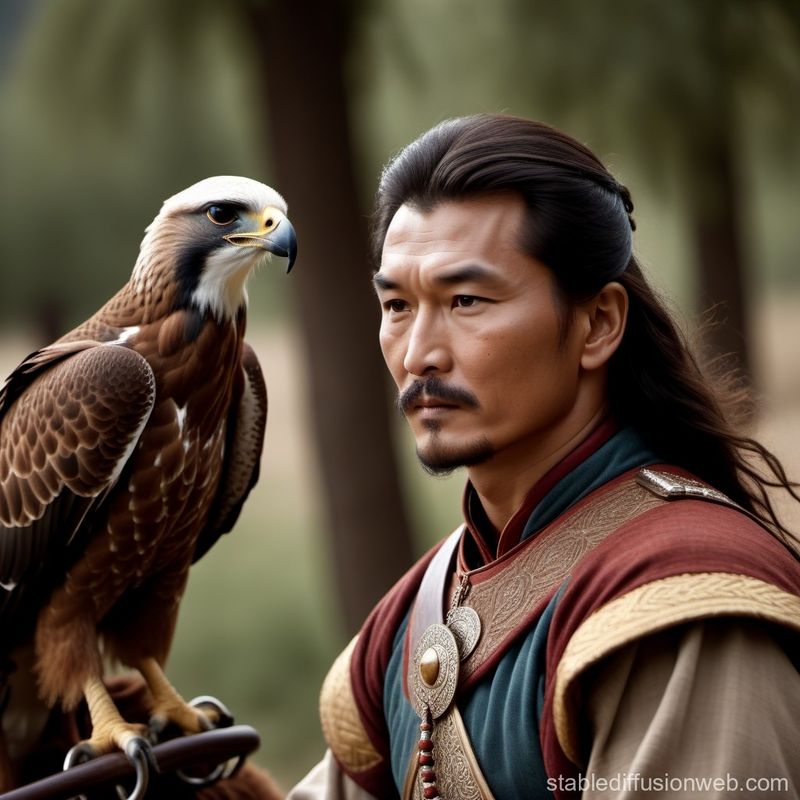
Genghis Khan, the formidable Mongol leader, was known for his falconry skills, with a prized falcon named Thunderclap. This bird was not only a hunting partner but also a symbol of Khan’s dominion over the vast lands he conquered.
Thunderclap soared high above the steppes, scouting for prey and showcasing nature’s raw power. Khan revered this falcon for its speed and precision, traits he admired and emulated in his military campaigns.
The bond between Khan and Thunderclap reflected the harmony between man and nature, essential to the Mongolian way of life and its warrior ethos.
Frida Kahlo’s Spider Monkey, Fulang Chang
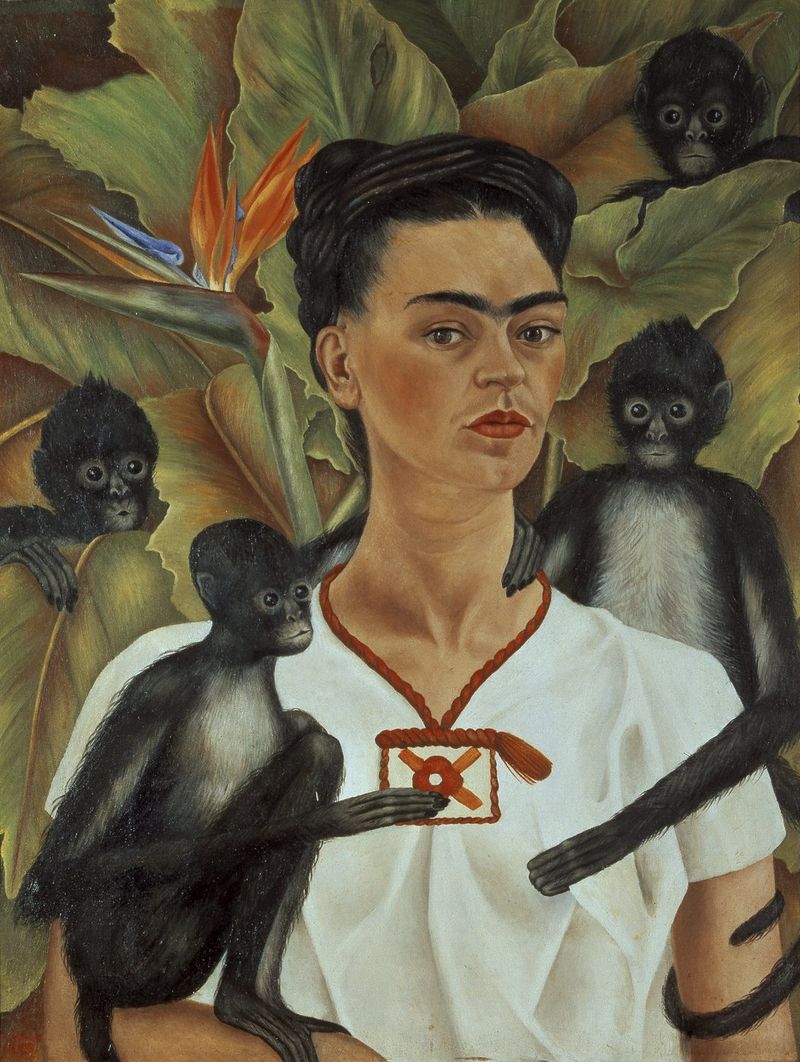
Frida Kahlo, the renowned Mexican artist, shared her life with a spider monkey named Fulang Chang. Known for her eccentricity and love for animals, Kahlo found inspiration in this lively creature.
Fulang Chang was more than a pet; it was a muse, featured in many of Kahlo’s paintings. The monkey’s playful antics mirrored the vibrant colors and emotions depicted in her art.
In their shared moments, Kahlo found solace and a connection to the wild, enhancing her artistic expression and adding a layer of depth to her already profound work.
Julius Caesar’s Elephant, Hanno
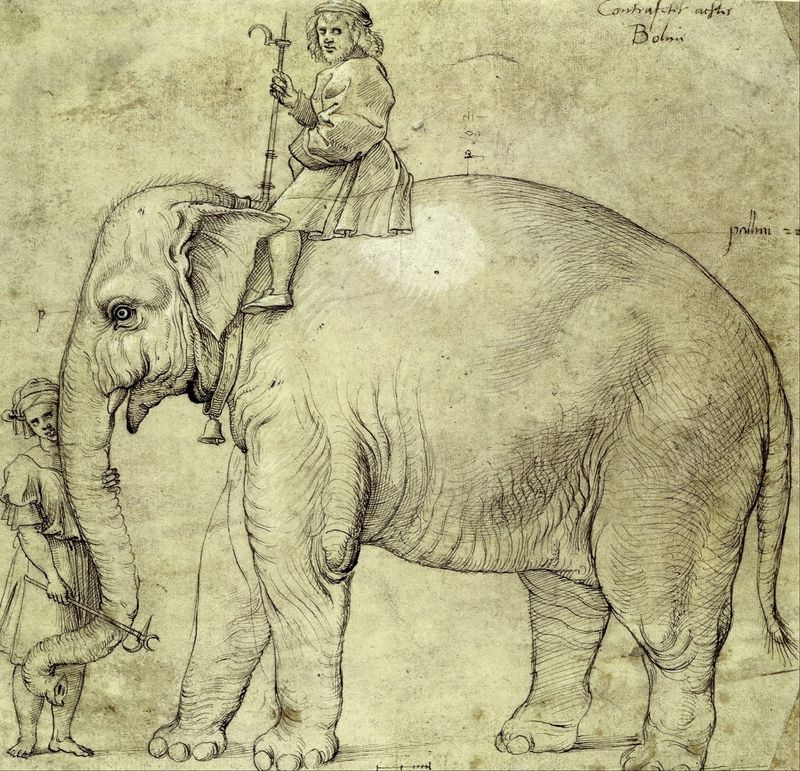
Julius Caesar, the legendary Roman general, owned an elephant named Hanno. This magnificent creature was part of Caesar’s grand triumphal processions, symbolizing power and conquest.
Hanno was a gift from an African king, representing the reach and influence of Caesar’s campaigns. The elephant’s majestic presence left a lasting impression on the Roman populace, adding to Caesar’s legendary status.
Marching through the streets of Rome, Hanno was a living testament to Caesar’s victories, embodying the strength and grandeur of the Roman Empire and its illustrious leader.
Mozart’s Starling, Star
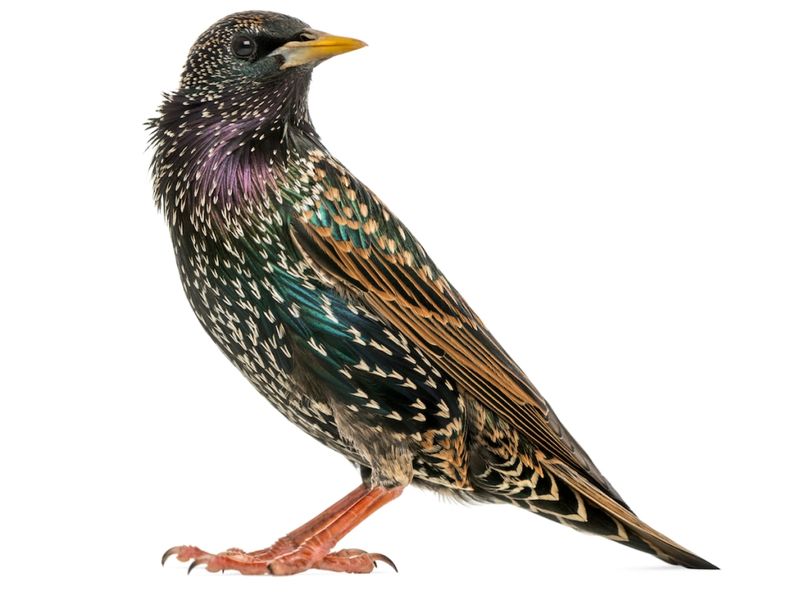
Wolfgang Amadeus Mozart, the musical genius, had a starling named Star that influenced his compositions. This bird mimicked Mozart’s music, chirping along to melodies and inspiring new creations.
Star’s unique ability to reproduce tunes intrigued Mozart, leading to a deep bond between the composer and his avian friend. The starling’s musicality was a delightful surprise, adding a whimsical touch to Mozart’s creative process.
Their interaction showcased the unexpected sources of inspiration in Mozart’s life, blending the natural world with the intricate art of musical composition.
Sigmund Freud’s Chow Chow, Jofi
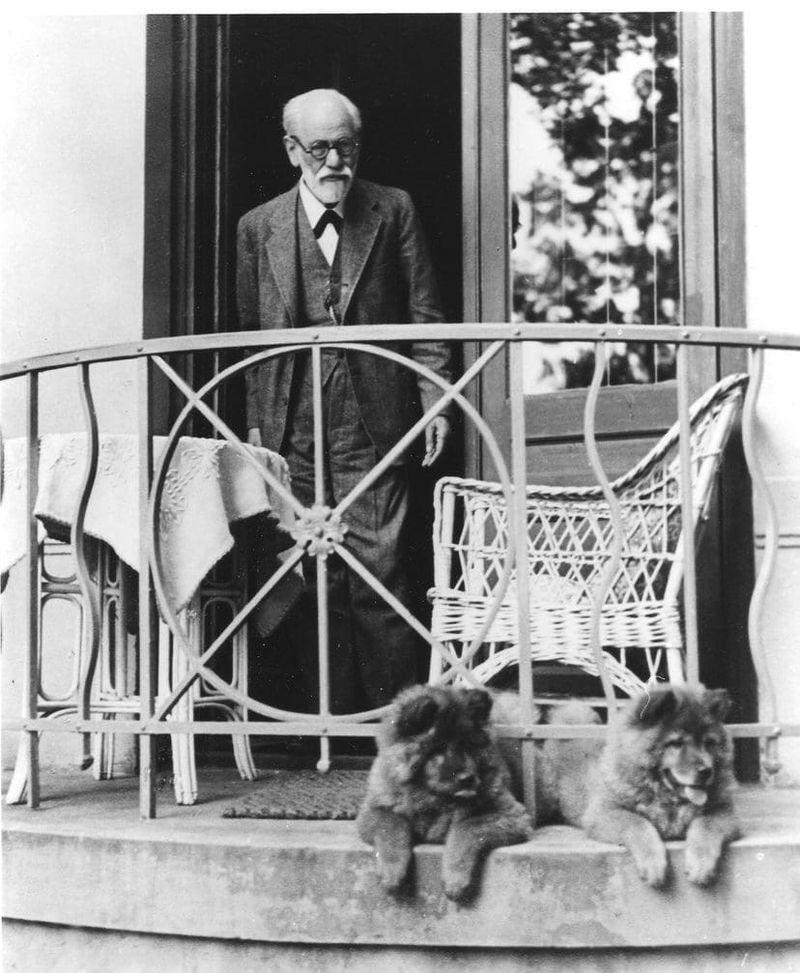
Sigmund Freud, the father of psychoanalysis, found comfort in his Chow Chow named Jofi. This loyal dog was present during many of Freud’s sessions, providing a calming influence on both the patients and Freud himself.
Jofi’s serene presence helped create a relaxed atmosphere, essential for delving into the depths of the human psyche. Freud observed the dog’s reactions to patients, gaining insights into their emotional states.
Jofi’s companionship underscored the importance of understanding and empathy, key elements in Freud’s groundbreaking work in psychology and his approach to human behavior.

